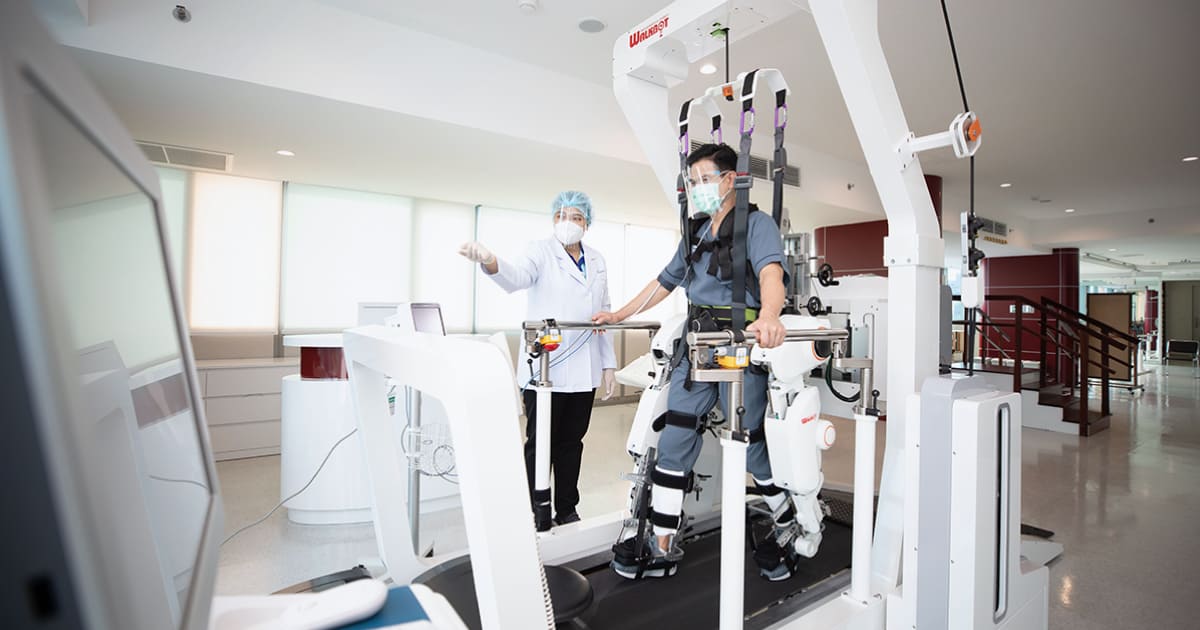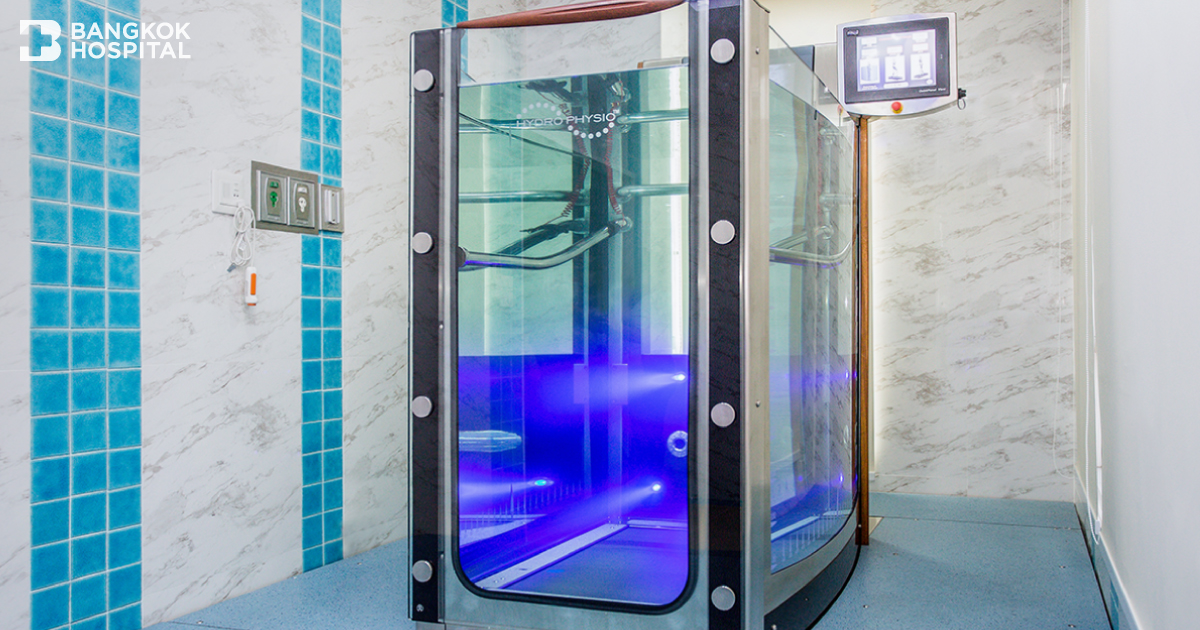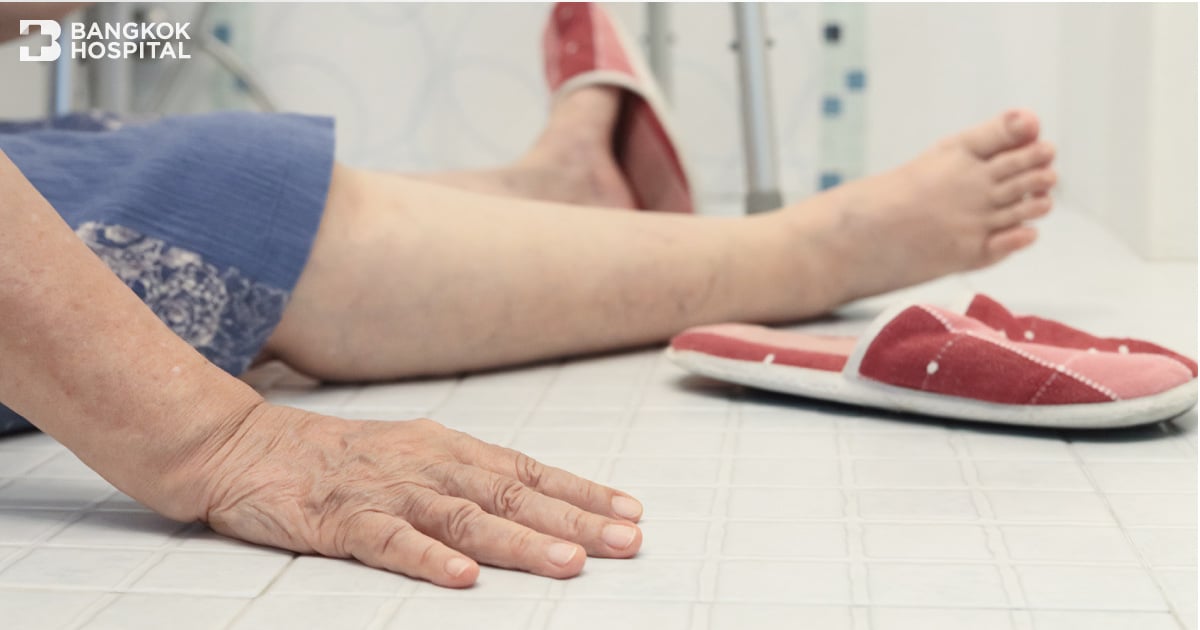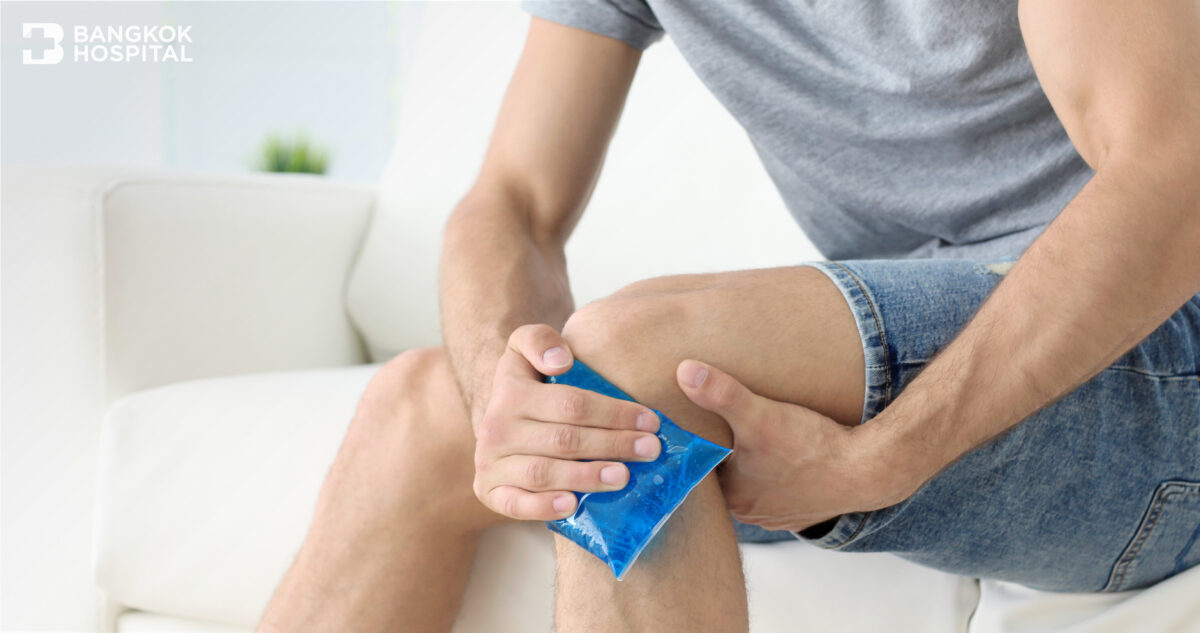Gait training Robotic-assisted gait training
Robotic-assisted gait training
Robotic-assisted gait training utilizes a robot (walkbot) to help rehabilitate locomotion-impaired patients. Each patient’s basic movements along with physical attributes are recorded by the system as reference before the walkbot is attached to the patient, such that the length of the robot’s legs can be adjusted accordingly. Every step will be measured in centimeters, while the speed of the treadmill will be in kilometers per hour.
During every session, the patient must wear a safety harness before the counter-balance system is attached for safety reasons. The counter-balance system supports the patient’s weight while taking steps, and the robot will stop immediately when it detects a pulling force, tugging, or greater than acceptable resistance. If there is any problem, the patient or the therapist can abort the training directly by means of the emergency button that is placed on the parallel bar.
Who Would Benefit from the Walkbots?
Robotic-assisted gait training is suitable for patients who cannot walk due to impairments in their neuromotor or muscular systems, or misshaped bone structures. These include:
- Stroke
- Cerebral palsy: CP
- Parkinson’s Disease
- Paraplegia: SCI
- Hemiplegic patients
- Paraplegic patients
- Multiple sclerosis: MS
- Traumatic brain injury: TBI
- Endoprosthesis e.g. total hip endoprostheses
- Muscle weakness due to lack of mobility
- Spinal muscular atrophy: SMA
- Degenerative joint disease of the lower limbs
How to Prepare for Robotic-Assisted Gait Training
- Each training session is about 45 minutes long.
- Wear suitable clothing – not too loose nor tight – so that it will not interfere with body movements.
- Articles of clothing for the training should include ankle-height walking shoes, long socks and trousers.
- Rest sufficiently prior to every session.
- It is recommended a session commences no sooner than 30 minutes after a meal. This is to prevent side-effects during the training – such as heartburn, nausea, vomiting, etc. Also, eating during a session is prohibited.
- Inform the therapist immediately if you have an unusual symptom – such as extreme fatigue, nausea, light-headedness, chest pain, heart palpitation, dizziness, etc. – or the need to use the toilet.
Restrictions for Robotic-Assisted Gait Training
- Weighing more than 135 kilograms.
- Recently underwent muscle contraction treatment.
- Weak bones.
- Has an injury around lower limbs and hips.
- Has blood circulation issues.
- Irregular heartbeats.
- Cognitive impairments, being uncooperative or resistive.
- Long time peripheral intravenous patients.
- Patients who are on ventilators.
- Patients with abnormal lower limbs developments or severe spinal disfigurement (abnormal bones or marrow progression).
- Patients with severe issues with lower body blood vessels.
- Patients who cannot be moved due to abscess in the bone, burn injury or infected wounds; as well as those who have undergone hip, knee, or ankle surgeries.
Precautions About Robotic-Assisted Gait Training
There are some possible issues that may arise from the treatment: for example, abrasion, reddish marks or bruising around the areas where the walkbot is attached, etc.



















